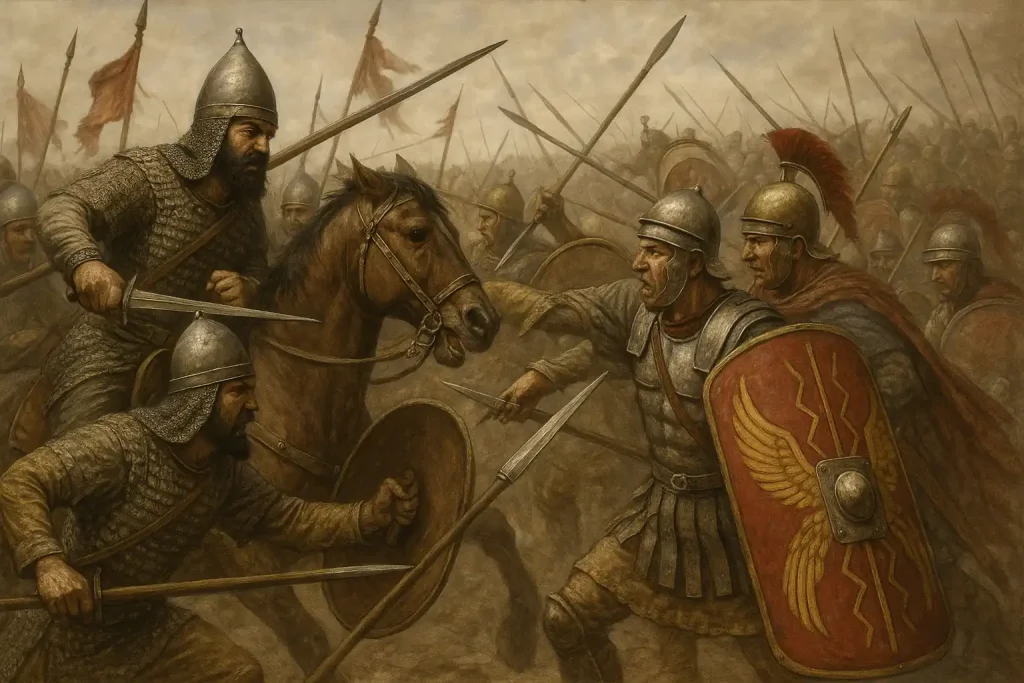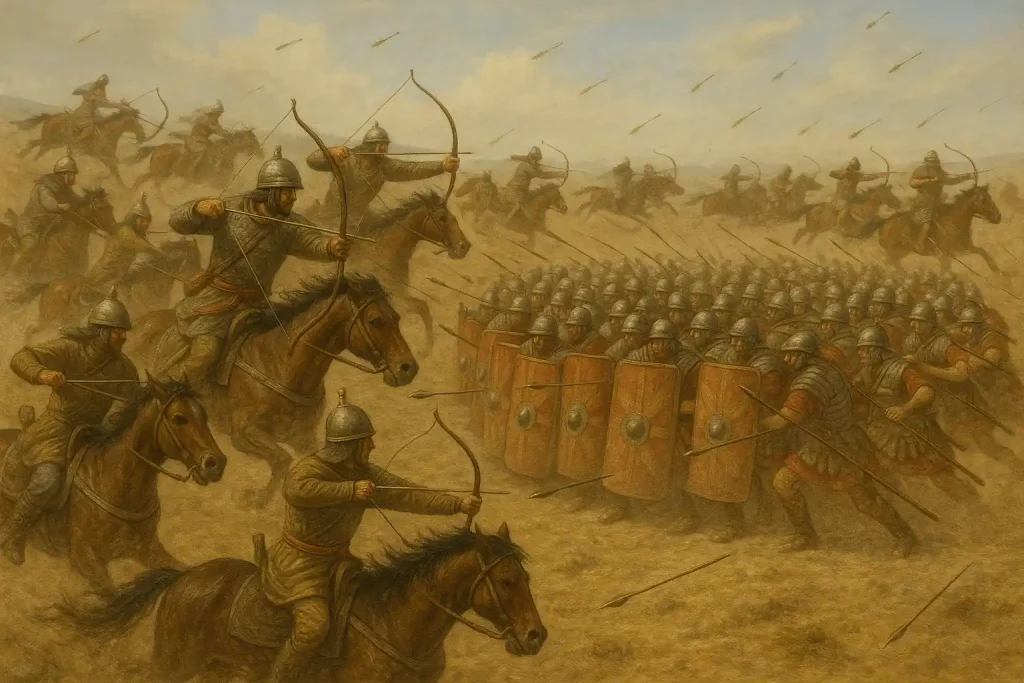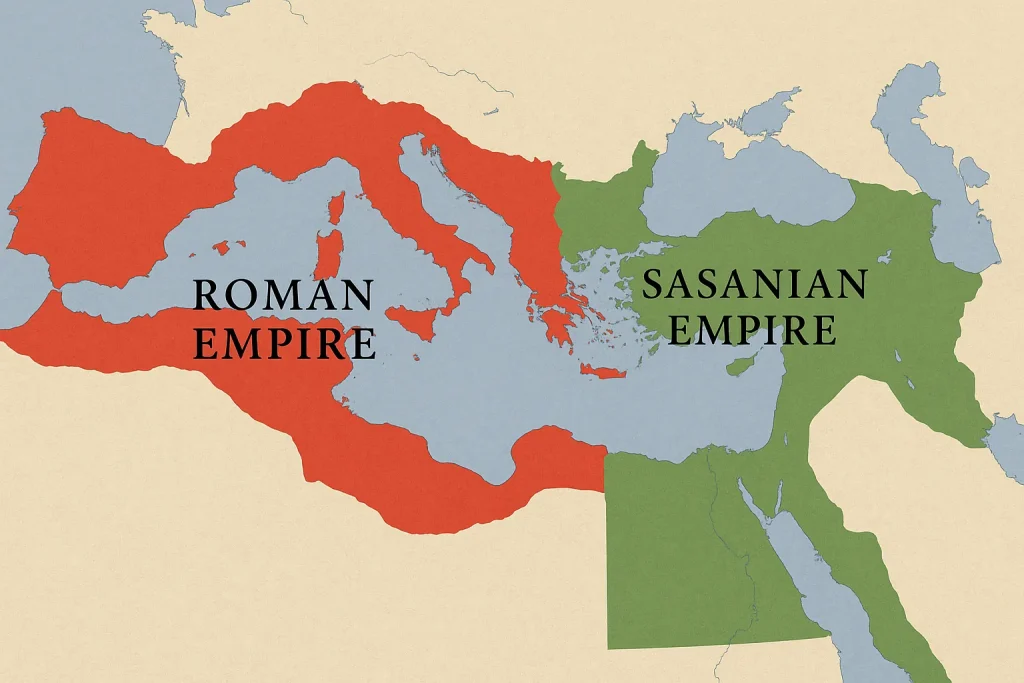Introduction
The Iran-Rome wars represent the longest continuous conflict in human history, stretching from 54 BCE to 628 CE. This 721-year struggle pitted the Roman Empire, including its republican and Byzantine phases, against the Parthian and Sasanian Empires of Iran. The battles centered on border regions like Armenia and Mesopotamia, shaping the geopolitics of the ancient world. Beyond military engagements, these wars influenced cultural exchanges and economic ties between East and West. This article aims to dissect the origins, key events, and lasting legacies of this enduring rivalry. Understanding this history offers insights into modern international relations.
Both Rome and Iran pursued imperial ambitions, driving the Iran-Rome wars into a protracted struggle. The Parthian Empire initiated hostilities, later succeeded by the Sasanian Empire with greater intensity. The conflict began with the Battle of Carrhae in 53 BCE, a disastrous Roman defeat under Crassus. Over centuries, alliances with vassal states and shifting alliances complicated the warfare. This dynamic extended the duration and scope of the conflict across multiple generations. The resilience of both powers fueled this centuries-long confrontation.
Today, the Iran-Rome wars are studied as a model of enduring rivalry between great powers. Their impact reshaped military strategies and regional cultures significantly. The rise of Islam eventually concluded this saga, leaving a rich historical legacy. This analysis seeks to explore the multifaceted nature of these wars. By examining their course, we can appreciate their role in shaping ancient civilizations. Let us start with the roots of this historic rivalry.

Origins and Beginnings
The origins of the Iran-Rome wars lie in the expansion of the Roman Republic and the Parthian Empire. After the fall of the Seleucid Empire, both powers vied for control over Armenia and northern Mesopotamia. The first major clash occurred in 54 BCE when Crassus led Roman legions into Parthian territory. The Battle of Carrhae ended in a crushing defeat, with Crassus killed and his army decimated by Parthian horse archers. This event set a precedent for future confrontations. The loss forced Rome to rethink its eastern strategy.
The Parthian Empire leveraged its mobile cavalry and guerrilla tactics against Roman legions. Mesopotamia and Syria became battlegrounds, with cities like Dura-Europos changing hands repeatedly. In the second century CE, Emperor Trajan attempted to conquer Parthian lands, briefly capturing Ctesiphon. However, these gains were short-lived, as Roman forces withdrew under Hadrian. The Iran-Rome wars evolved into a strategic contest, with both sides seeking dominance. This early phase established a pattern of aggression and retreat.
The rise of the Sasanian Empire in 224 CE marked a new chapter in the Iran-Rome wars. Ardashir I aimed to restore the glory of the Achaemenid Empire, challenging Roman authority. His successor, Shapur I, escalated tensions by defeating and capturing Emperor Valerian at Edessa in 260 CE. This victory showcased Sasanian military prowess, shifting the balance temporarily. The conflict’s roots in imperial ambition ensured its longevity. Let us now examine the key phases of this struggle.

Key Phases
One of the pivotal phases of the Iran-Rome wars occurred under Shapur I in the third century CE. His triumph at Edessa in 260 CE, where he captured Valerian, humiliated Rome. This success compelled Rome to negotiate a temporary truce. The rise of Palmyra under Queen Zenobia briefly restored balance, resisting Sasanian advances. Battles often involved the capture of key cities like Nisibis. This period highlighted the fluctuating power dynamics in the region.
The sixth century saw the Iran-Rome wars reach a climax with the Byzantine-Sasanian wars. Khosrow I launched invasions, seizing Antioch and parts of Egypt from the Byzantine Empire. Emperor Heraclius countered with a decisive victory at Nineveh in 627 CE, pushing Sasanian forces back. Both sides enlisted allies, such as the Avars and Turks, to bolster their campaigns. This phase demonstrated the strategic intensity of the conflict. The Iran-Rome wars became a test of endurance for both empires.
The siege of Constantinople in 626 CE marked a critical moment in the Iran-Rome wars. The Sasanian Empire, allied with the Avars, threatened the Byzantine capital. Despite their efforts, the siege failed due to strong defenses and naval support. Heraclius then invaded the Sasanian heartland, overthrowing Khosrow II. This reversal weakened the Sasanian Empire internally. The key phases of this conflict blended military might with diplomatic maneuvers. Let us explore their cultural and military impacts next.

Cultural and Military Impacts
The Iran-Rome wars fostered significant cultural exchanges between the two empires. Prisoners of war and merchants facilitated the spread of art, architecture, and ideas. The Sasanians adopted Roman engineering techniques, while Rome incorporated Parthian cavalry tactics. Literary works, such as Persian epics recounting Valerian’s capture, preserved these events. This cultural fusion enriched both civilizations. The impact extended beyond battlefields to everyday life.
Militarily, the Iran-Rome wars drove innovations on both sides. The Parthian use of horse archers influenced Roman auxiliary forces. The Sasanians developed fortified cities, like Darabgerd, to counter Roman sieges. Roman legions, in turn, adapted to eastern warfare with lighter armor. These advancements shaped medieval military strategies. The conflict’s length allowed for a gradual evolution of tactics. The Iran-Rome wars left a lasting legacy in warfare.
The prolonged nature of the Iran-Rome wars strained both economies and societies. Constant mobilization depleted resources, leading to taxation and unrest. Religious tensions, especially with the rise of Christianity in Rome, added complexity. Zoroastrianism in Iran clashed with Christian influences, fueling ideological battles. These cultural and military shifts influenced the fall of both empires. Let us now consider the end and consequences of this rivalry.

End and Consequences
The Iran-Rome wars concluded with the Byzantine-Sasanian War’s end in 628 CE. Heraclius’s victory at Nineveh and the deposition of Khosrow II marked a turning point. The Sasanian Empire, exhausted by war, faced internal revolts. A peace treaty was signed, restoring pre-war borders. However, this truce was short-lived due to mutual exhaustion. The rise of Islam soon altered the regional power balance. This marked the end of centuries of conflict.
The consequences of the Iran-Rome wars were profound for both sides. The Byzantine Empire emerged weakened, vulnerable to Arab invasions. The Sasanian Empire collapsed under Islamic conquests by 651 CE. Trade routes, disrupted by war, shifted eastward, benefiting emerging powers. The prolonged struggle left both regions depleted. Cultural exchanges, though, persisted through Islamic civilization. The Iran-Rome wars reshaped the ancient world.
The legacy of the Iran-Rome wars influenced subsequent empires. The Byzantine military tactics influenced the Umayyad Caliphate. Persian administrative systems were adopted by Arab rulers. The conflict’s end paved the way for the Islamic Golden Age. Historians view this period as a bridge between antiquity and the medieval era. The Iran-Rome wars’ end had far-reaching effects. Let us conclude with a reflection on its significance.

Leave a Reply